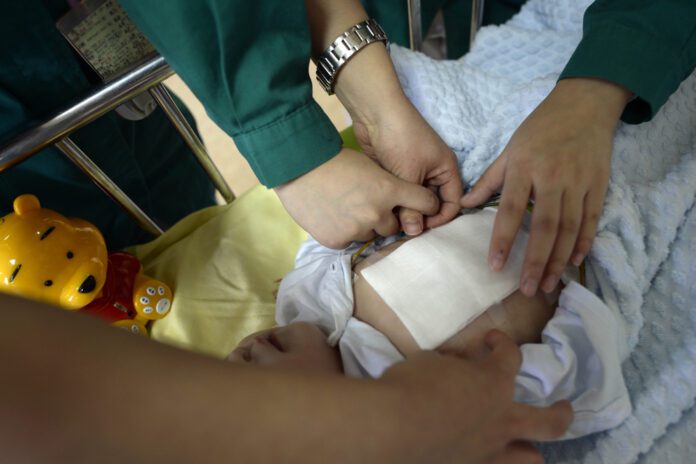Overview
Ectopia Cordis is an extremely rare condition in which babies are born with their hearts partially or fully outside their bodies. It tends to go hand-in-hand with other birth defects in the heart or belly area.
Only eight of 1 million babies have ectopia cordis. And while most of them are either stillborn or die within 3 days after birth, there is the reason for some hope. Health care teams that include doctors, nurses, occupational and physical therapists, and other specialists have helped some babies with ectopia cordis to live for weeks or even years.
Cause
Ectopia cordis happens because all or at least part of a child’s breastbone (sternum) fails to develop normally. Instead of closing up, the chest remains open. This happens very early on in embryonic development.
The exact reasons for this aren’t clear. It’s considered a random abnormality.
Some theories include:
• chromosomal abnormalities
• intrauterine drug exposure
• rupture of fetal membranes (chorion) or yolk sac
Damage to the amniotic sac (amniotic band syndrome) may also be a cause. A rupture of the sac in early development can cause fibrous bands of the amnion, the inner membrane of an embryo, to get tangled up with the embryo. This can impair development or cause deformities of the affected parts, including the heart.
A male fetus is more likely to develop ectopia cordis.
More research into the causes and risk factors for ectopia cordis is needed.
Symptoms
How is ectopia cordis diagnosed?
This condition is often diagnosed by ultrasound and can occur as early as the first trimester. If not discovered during pregnancy, it becomes obvious as soon as the baby is born.
Treatment
If the mother never had an ultrasound or the deformity wasn’t visible, the condition is immediately apparent at birth.
Infants who survive birth with this condition require intensive care. This may include incubation and use of a respirator. Sterile dressings may be used to cover the heart. Other supportive care, such as antibiotics to prevent infection, is also needed.
In some cases, surgeons can attempt to relocate the child’s heart inside their chest and close their thoracic cavity. This type of surgery has many challenges, especially if the child has several severe defects.
Surgery is most likely to be approached in stages. During the initial operation, the heart must be repositioned and the chest wall defect must be covered. Surgeons can create a temporary closure with synthetic material.
Additional surgeries may be needed to repair any other heart or abdominal wall defects. Subsequent surgeries to reconstruct the chest wall can be performed using bone and cartilage grafts.
Through it all, the heart must be protected.
Other
What are the expected outcomes for a baby with ectopia cordis?
Unfortunately, the ectopia cordis survival rate is just 10%. Most babies born with hearts outside their bodies have severe intracardiac abnormalities are stillborn or die within the first few days of life. Those who survive require extensive surgeries and lifelong medical care delivered by a team of specialists.
Source



